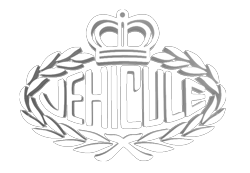
Excerpt from Paradise Lost: The Rise and Fall of Ben Kramer. Read the full story in the VÉHICULE print edtion.
"Donald Joel Aronow was born on March 3, 1927 and grew up in the Sheepshead Bay section of Brooklyn back when the borough was largely farmland. He grew up rich, but that didn’t last. His parents lost the taxi company that made them wealthy, which kickstarted Don’s hustler instincts. He began his working life at a gas station before moving on to ushering at a movie theater. He proved tactful at moving his way up through the ranks wherever he was employed, supplementing his income by flipping cars on the side. He enlisted in the Merchant Marines during World War II where he was first introduced to boats.
After returning home in 1947, the GI Bill sent him to Brooklyn College. The knack he showed for sports while there fed his fiercely competitive nature. If for nothing but lack of direction, he became a high school gym teacher after graduating—a job whose only redeeming characteristic for Don was the uniform. He fell firmly into the “jock” category. Things were good. Things were easy.
As a change of pace, he relocated himself and his budding family to New Jersey and went to work for his first wife’s father’s construction company. Words came to near-blows in a matter of months, and by 1953, Aronow had opened his own contracting business in the area—The Aronow Corporation. In less than ten years, he would make his first million building commercial properties in the area, taking full advantage of America’s lingering post-war boom.
By age 32, in 1959, he figured that he had amassed enough wealth to live comfortably—he retired and moved to Miami. Why did he move, uprooting his family in the process? He would go on to say that he was simply bored in the northeast, living the same life he had for far too long. It was time to head down I-95 until he ran out of road.
Regardless of the circumstances, one indisputable fact was that Don arrived in Miami without direction. The city, like Aronow, was in one of its many transitional periods by the late ‘50s. Like Aronow, who took advantage of Americans’ desire to pour more and more of their newfound wealth into construction in the wake of World War II, Miami-Dade County seized the opportunity to market their beaches, weather and high-rolling lifestyle to those very same people. To flocks of midwesterners, Miami was as good as, if not better than, a trip to the tropics. It was glamorous and accessible, with vacation deals being offered left and right.
Like any too-good-to-be-true boom, Miami’s periodic success as a destination was volatile. The tourist seasons of 1957 and 1958 were a bit too cold for vacationers’ tastes, a seemingly small factor that led to the industry nearly collapsing in on itself. By that time though, Miami’s reputation had burrowed itself in the collective consciousness—enough so for the city and its primary (legal) industry to pull through, albeit precariously.
Don capitalized on the city’s specific brand of faded glory and quickly latched onto gambling, which provided him with a sense of direction and satiated his competitive streak. For the time being.
When he lived back up north, Don had bought a sport fishing boat. He wasn’t terribly invested in it, but he brought it down to Miami anyway. That’s what people were into in Florida, right? There’s lots of water, laws that were more suggestions than anything else and money. One thing led to another, and in 1962 Don caught wind of the annual Miami-Nassau-Miami powerboat race. It was a 184-mile route across practically untouched, unpatrolled water. It offered speed, danger and competition—all of which were Don’s proverbial middle names. It was a sport that most people didn’t know was a sport, presenting a pocket of undeniable growth potential. Even before officially entering, he knew that he was hooked.
By the early ‘60s, powerboat racing was still in its infancy. Fellow New Jersey trans-plant Richard Howard Bertram, better known as Dick, was at the helm of the sport and was among the first to introduce the world to a boat with a deep-vee hull—one whose v-shaped bottom could cut through the water better than anything else on the market could. While the general concept was around for years, only the fronts of boats had been v-shaped up until that point. Bertram’s designs were set apart by the fact that the shape ran the entire length of the boat. His creations were first made from wood as was traditional for boatbuilding. He later employed lightweight, durable fiberglass, a development that forever changed the sport for the better.
By 1962, friend of a friend of a friend Howard Abbey designed and produced a powerboat for Don to enter in the Miami-Nassau-Miami race. In a triumph of his winning spirit (or a testament to beginner’s luck, depending on who you are), Aronow ended up finishing fourth and officially cementing his place in the world of go-fast boats."
Read all about the real story of Don Aronow, founder of Magnum Marine, Cigarette, Donzi and Formula (amongst others) in the 30 page VÉHICULE print edition feature story. Order here.





